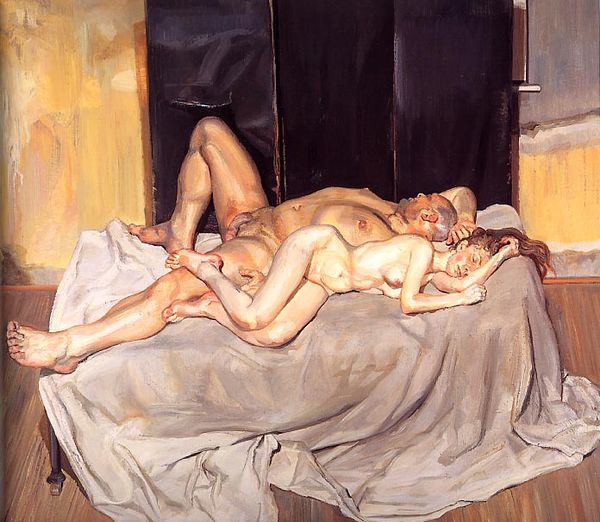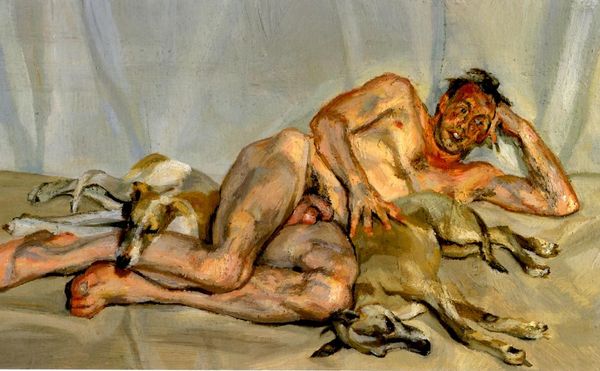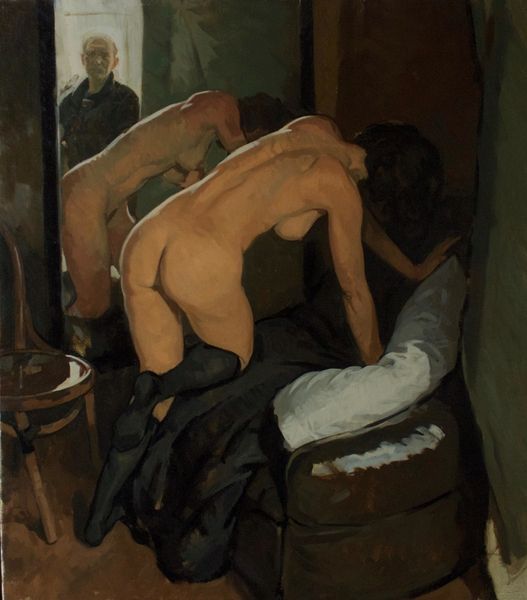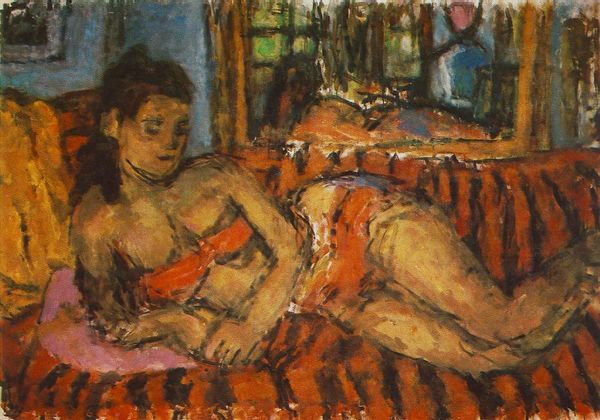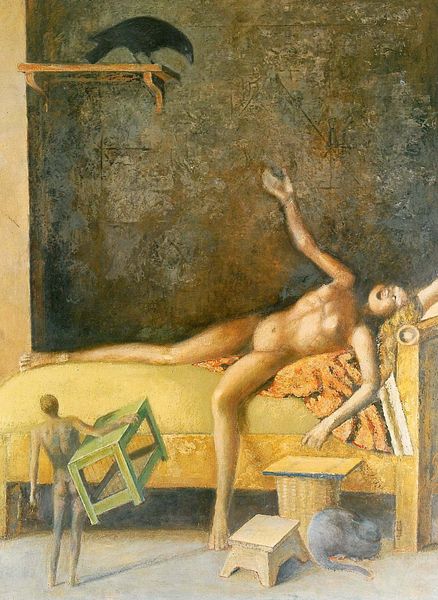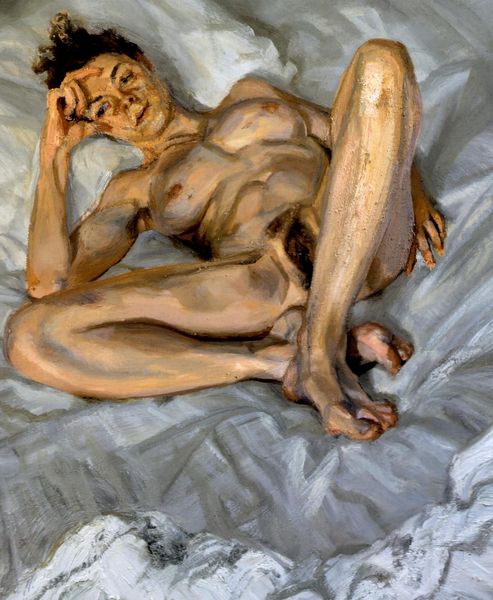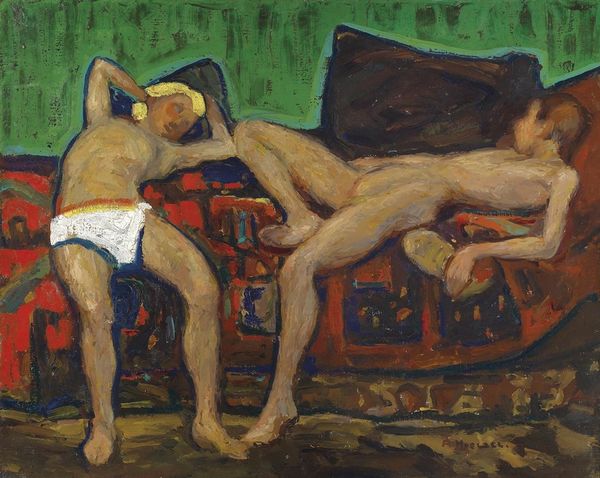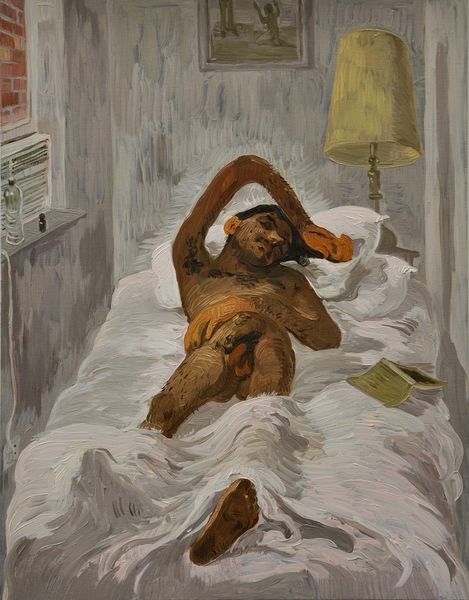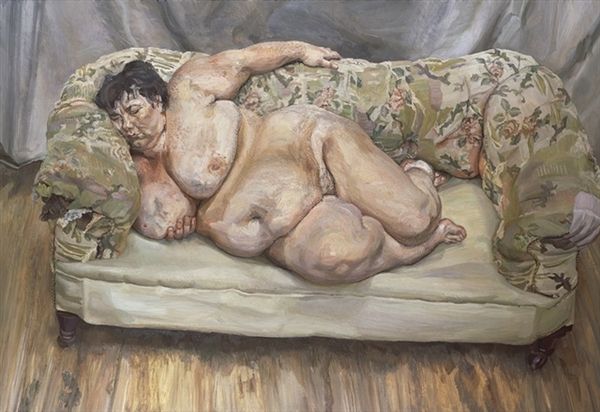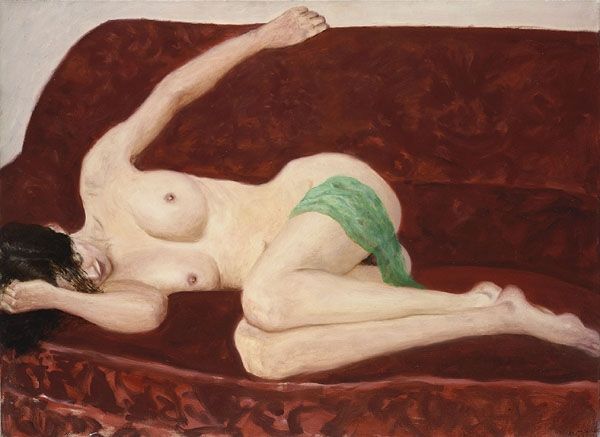
painting, oil-paint
#
contemporary
#
painting
#
oil-paint
#
figuration
#
genre-painting
#
nude
#
modernism
Dimensions: 152.4 x 127 cm
Copyright: ©Rosemarie Beck Foundation
Curator: Rosemarie Beck painted this scene, titled "Two in Room V", back in 1967. Editor: My first thought is that the entangled bodies seem caught between the throes of passion and the aftermath, rendered in these ochre hues, amidst this almost violent choreography within the intimate disorder of a room. Curator: Absolutely. Beck's use of genre painting conventions adds an interesting layer. In the mid-20th century, depictions of intimate life and nudes were undergoing considerable transformation. It certainly reflects broader shifts in social attitudes. The "mess" around them also contrasts ideals around womanhood and motherhood at the time. Editor: Considering the visual language here, though, I'm curious about this 'V'. Beyond a simple room number, could it allude to the Venus archetype, distorted and destabilized in this contemporary rendering? The nude figures, rather than representing idealized forms, seem almost… vulnerable. The shapes also make me think of expressionism and psychoanalysis where bodies show what language conceals. Curator: Indeed, the vulnerability you note disrupts the conventional erotic gaze one might expect. Beck consistently employs classicizing motives – but almost always distorts or disfigures them. The 'V' perhaps speaks to both ‘victory’ and the opposite, suggesting a complexity beneath surface appearances, also, it is impossible to ignore the shadow in this bedroom interior. Is it an inner or outer element for this couple? Editor: Speaking of appearance, there's this clear material aspect; the brushwork is incredibly loose, almost aggressively so in places. Given the broader art-historical trends of that decade, especially with movements challenging formalist conventions, Beck seems intent on bringing raw experience to the forefront, and stripping bare the artifice. It's more the rawness of Courbet than Ingres’ hyperreal and classic beauty, a counter statement to power that beauty embodies. Curator: It's a potent work – really inviting further interpretation on the changing roles of the figures throughout art history. Editor: Indeed, thank you for your wonderful observations today. It adds another piece to this interesting, visual conversation.
Comments
No comments
Be the first to comment and join the conversation on the ultimate creative platform.
